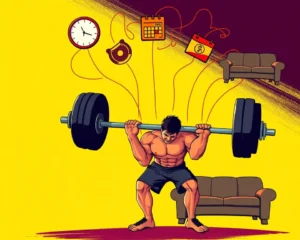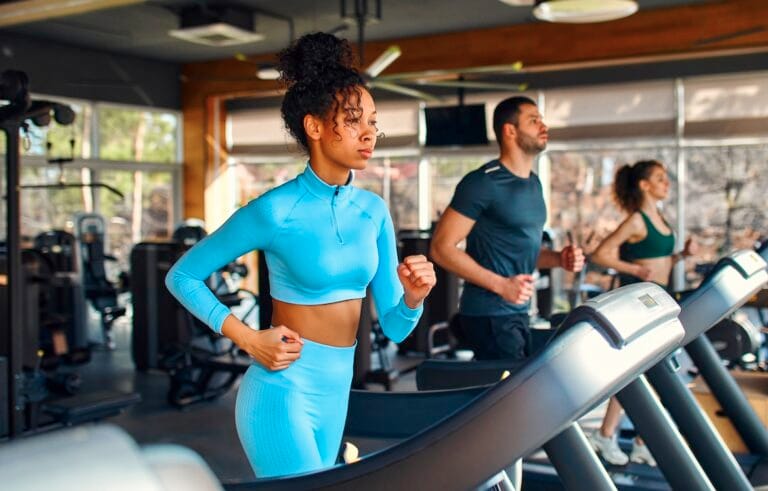The question of whether a run can replace a dedicated leg day at the gym is a common one among fitness enthusiasts. Many feel the burn in their legs after a run, especially after tackling hills or longer distances, leading them to wonder if they can skip the squats and lunges. However, while running does engage your leg muscles, it doesn’t quite replicate the benefits of a strength-focused leg workout. Here’s a breakdown of what fitness experts say about running and its impact on leg strength.
Muscles Worked During Running
Running is a full-body exercise, engaging the core and arms for stability and propulsion. However, the primary focus is on the lower body. According to Kate Baird, an exercise physiologist at the Hospital for Special Surgery, the main contributors to running are the muscles of the lower leg and ankle: the calves, soleus, hamstrings, glutes, and quads. These muscles work together to power you forward with each stride.
- Hip Flexors: These muscles at the front of your hip help lift your leg during each stride.
- Quadriceps: Located at the front of your thigh, these muscles extend the knee and stabilize impact as you land.
- Calves: These muscles at the back of your lower leg provide push-off power.
- Hamstrings: Found at the back of your thigh, these muscles help with knee flexion and powering your stride.
- Glutes: These muscles in your buttocks play a key role in propelling your body forward.
While running works these major muscle groups, it may neglect other areas, such as the hip’s external rotators, abductors, and adductors. Trail running, with its side-to-side motion, may engage these muscles more effectively, but typical road running might not. Additionally, while your core and upper body are involved in stabilization, they are not the primary focus.
Running vs. Resistance Training: Different Strengths
Both running and resistance training can make your legs stronger, but they do so in different ways. Running predominantly engages type one muscle fibers, also known as “slow-twitch” or endurance fibers. These fibers are resistant to fatigue and use fat as fuel. Resistance training, on the other hand, primarily builds type two muscle fibers, or “fast-twitch” fibers. These fibers are responsible for power and are activated during more forceful contractions. While high-intensity running, such as sprints, can also engage type two fibers, the primary focus of most runs is on building muscular endurance rather than strength.
According to Asher Kyger Henry, a physical therapist and running coach, running is primarily a cardiorespiratory activity, and it does not significantly build muscle mass. It mainly develops muscular endurance, using the strength built in the gym to maintain running mechanics.
Can Running Alone Strengthen Legs?
In theory, running can strengthen your legs to a degree. However, unless you are incorporating dedicated workouts like hill sprints or strides, you are mainly developing endurance-focused, type one muscle fibers. While you may feel your leg muscles working during a run, you are not effectively building muscle mass.
“If you go on a run and you wake up the next day and your legs are tired, you did leg day,” says Baird. “But if you wake up and you’re like, I’m gonna go take a Barry’s class, your run probably falls more into strict aerobic training without much contribution to the strength of your legs, and you still need leg day.”
McKenna Coughlin, a personal trainer and certified running coach, suggests that runners who rely solely on running for leg work could see huge improvements by implementing just one dedicated gym leg day per week. While running can supplement a leg day, it can’t completely replace it.
The Importance of Strength Training for Runners
Strength training offers benefits to all athletes, including runners, by improving performance and muscular development. Here are some reasons why runners should not skip leg day:
- Increased Power: Resistance training helps build muscle mass and power, improving your running speed and efficiency.
- Injury Prevention: Strengthening the muscles around your joints provides stability and reduces the risk of injuries.
- Improved Running Economy: Stronger leg muscles enhance your running form, allowing you to run more efficiently.
- Muscle Balance: Strength training can target neglected muscle groups, preventing imbalances that can lead to injuries.
- Enhanced Endurance: Resistance training can improve your muscles’ ability to use oxygen more efficiently.
How to Combine Running and Leg Workouts
Combining running and strength training can be done effectively with careful planning. Here are some tips:
- Prioritize Strength Training: If your goal is to build muscle, do your strength training before running.
- Allow for Recovery: Give your leg muscles at least 48 hours to recover after a strength training session. This doesn’t mean you can’t use your legs, but avoid high-demand activities.
- Vary Your Running Workouts: Include speed intervals, hill work, and tempo runs to challenge your muscles differently.
- Don’t Overdo It: Avoid adding too much training volume too quickly to reduce your risk of injury.
- Listen to Your Body: Be mindful of any aches or pains and rest when needed.
Sample Leg Strengthening Exercises
Here are some effective exercises for leg day that runners can incorporate:
- Squats: A fundamental exercise that works the quads, hamstrings, and glutes. Variations include regular squats, sumo squats, and split squats.
- Lunges: Excellent for enhancing strength and stability. Variations include forward lunges, side lunges, and curtsy lunges.
- Calf Raises: Focuses on strengthening the calf muscles. You can do these on a flat surface or on an elevated platform.
- Single-Leg Deadlifts: Improves balance and strengthens the hamstrings and glutes.
- Step Ups: Great for building leg strength and can be easily modified.
Integrating Running and Strength Training
There are ways to integrate running and leg day on the same day, but it’s important to do it correctly:
- Run After Lifting: It’s generally better to run after your strength session to avoid fatigued muscles.
- Low Intensity Running: After a hard leg workout, keep your run at a low to moderate intensity.
- Allow Time in Between: If you’ve done a hard strength session, wait about six hours before going for a run.
- Run For Recovery: Light running can encourage blood flow, helping muscles loosen and easing soreness.
Conclusion: Running is Not a Substitute for Leg Day
While running is a great form of exercise that works many leg muscles, it cannot fully replace a dedicated leg day focused on strength training. Running mainly improves muscular endurance, while strength training builds power, muscle mass, and stability. For optimal performance, runners should incorporate both into their training regimen, being mindful of recovery and intensity. The key is to find a balance that allows you to achieve your fitness goals while minimizing the risk of injury. By doing so, you will become a stronger, faster, and more efficient runner.







